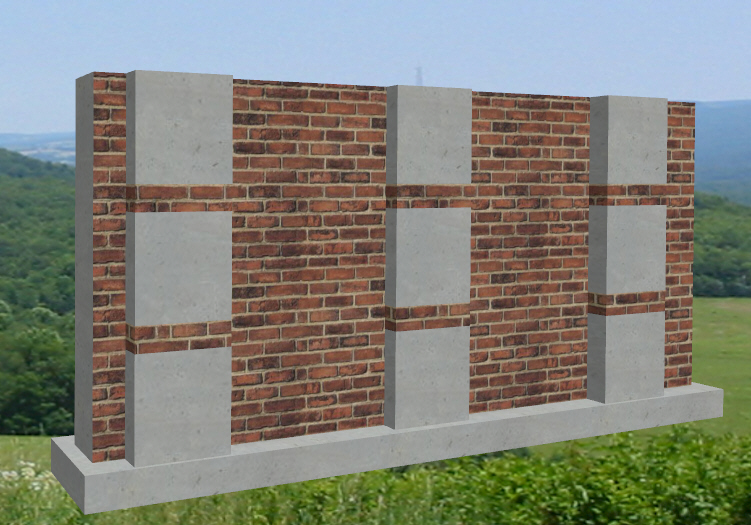The foundation of a building plays a vital role in ensuring its strength and durability. Among the various types of foundations available, pier and curtain wall foundations offer distinct advantages. In this article, we will delve into the details of pier and curtain wall foundations, exploring their features, benefits, and considerations.
Understanding Pier and Curtain Wall Foundations:
What is a Pier and Curtain Wall Foundation?
A pier and curtain walls foundation is a type of deep foundation system commonly used in construction projects. It consists of a series of concrete piers, or columns, interconnected by a horizontal concrete beam, known as the curtain wall. This configuration provides excellent load-bearing capabilities and stability, making it suitable for a wide range of structures.
How does a Pier and Curtain Wall Foundation work?
Pier and curtain wall foundations distribute the weight of a building evenly, transferring it to the ground. The piers penetrate deep into the soil or bedrock, ensuring stability and preventing settlement issues. The curtain wall connects the piers, offering additional strength and rigidity to the foundation.
Benefits of Pier and Curtain Wall Foundations:
Enhanced Load-Bearing Capacity:
Due to their deep penetration into the ground, pier and curtain walls foundations can support heavy structures and distribute loads effectively. Pier and curtain wall foundations are well-suited for tall buildings, bridges, and other large-scale construction projects.
Stability and Resistance to Settlement:
By reaching the stable layers of soil or bedrock, pier, and curtain walls foundations minimize the risk of settlement, ensuring long-term stability. This advantage is particularly important in areas with poor soil conditions or areas prone to seismic activity.
Flexibility in Challenging Terrain:
Pier and curtain wall foundations are adaptable to various soil conditions, making them suitable for sites with uneven or challenging terrain. The ability to penetrate through unstable soil layers provides a reliable solution for construction in areas where traditional shallow foundations may not be feasible.
Cost-Efficiency:
While the initial installation costs of pier and curtain walls foundations may be higher compared to shallow foundations, they offer long-term cost benefits. The durability and resistance to settlement reduce the need for costly repairs or foundation modifications in the future.
Considerations for Pier and Curtain Wall Foundations:
Site Investigation and Engineering:
Proper site investigation and engineering analysis are crucial before implementing a pier and curtain walls foundation. Soil testing, geological surveys, and structural calculations help determine the optimal design and dimensions for the piers and curtain wall.
Construction Process:
The construction process for pier and curtain walls foundations requires specialized equipment and skilled professionals. Excavation, drilling, concrete pouring, and reinforcement installation are integral steps that must be executed meticulously to ensure a reliable foundation.
Maintenance and Inspection:
Regular maintenance and inspections are essential to monitor the condition of the foundation and identify any potential issues early on. This proactive approach helps prevent structural problems and ensures the longevity of the building.
Conclusion:
Pier and curtain walls foundations provide a robust and dependable solution for constructing buildings on challenging terrain or in areas with poor soil conditions. Their ability to distribute loads effectively, resist settlement, and adapt to various terrains make them a preferred choice for many construction projects. By understanding the benefits and considerations associated with these foundations. Architects, engineers, and builders can make informed decisions to create structurally sound and durable buildings.

